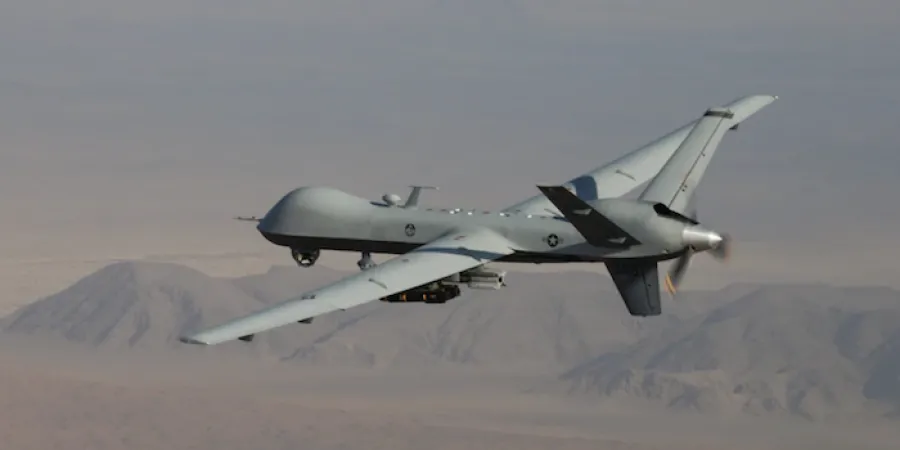New artificial intelligence system for American drone
The Reaper MQ-9 is now equipped with an ultramodern pod that enables location and identification of targets and tracking of them using algorithms based on machine learning. The first test flight took place last week
Dan Arkin
|
08/09/2020
General Atomics Aeronautical Systems has integrated its MQ-9 Reaper drone with an ultramodern pod containing a system based on artificial intelligence that enables autonomous target selection in the battlespace.
According to the Flight Global website, the drone has already flown with the new pod that enables the detection of targets, tracking of them and transfer of data to commanders on the ground. The first test flight took place September 3 in North Dakota. The pod was developed in the US Air Force Research Laboratory by SRC, a company specializing in development of radars and electronic warfare equipment.
The system is equipped with a high-speed computer processor that runs algorithms based on machine learning. The identification of targets is based on data gathered by the drone's electro-optical sensor and radar. The US Air Force is interested in speeding up the process of spotting and identifying targets for human decisionmakers by commanders in the field.
SRC, which developed the pod, said that the advanced sensors have rapidly increased in fidelity and are now able to collect vast quantities of data, which can be stored in the UAV's computer and physically downloaded for review at the end of the mission, or be downloaded to the ground during the mission. On-board data storage is restricted by strict size, weight and power limitations, so it is better to transfer the statistics to ground stations, but this requires more power, bandwidth and frequencies. For that reason, the company is already moving to develop faster and more powerful processors.
The artificial intelligence in the system speeds up the process that starts with observation, continues with orientation in the field and ends with the making of decisions, which is at the core of the Pentagon’s future war strategy. The Defense Department believes that this is the most efficient way to combat terrorists as well as react faster to aggression from rivals like Russia and China.
The Reaper MQ-9 is now equipped with an ultramodern pod that enables location and identification of targets and tracking of them using algorithms based on machine learning. The first test flight took place last week
General Atomics Aeronautical Systems has integrated its MQ-9 Reaper drone with an ultramodern pod containing a system based on artificial intelligence that enables autonomous target selection in the battlespace.
According to the Flight Global website, the drone has already flown with the new pod that enables the detection of targets, tracking of them and transfer of data to commanders on the ground. The first test flight took place September 3 in North Dakota. The pod was developed in the US Air Force Research Laboratory by SRC, a company specializing in development of radars and electronic warfare equipment.
The system is equipped with a high-speed computer processor that runs algorithms based on machine learning. The identification of targets is based on data gathered by the drone's electro-optical sensor and radar. The US Air Force is interested in speeding up the process of spotting and identifying targets for human decisionmakers by commanders in the field.
SRC, which developed the pod, said that the advanced sensors have rapidly increased in fidelity and are now able to collect vast quantities of data, which can be stored in the UAV's computer and physically downloaded for review at the end of the mission, or be downloaded to the ground during the mission. On-board data storage is restricted by strict size, weight and power limitations, so it is better to transfer the statistics to ground stations, but this requires more power, bandwidth and frequencies. For that reason, the company is already moving to develop faster and more powerful processors.
The artificial intelligence in the system speeds up the process that starts with observation, continues with orientation in the field and ends with the making of decisions, which is at the core of the Pentagon’s future war strategy. The Defense Department believes that this is the most efficient way to combat terrorists as well as react faster to aggression from rivals like Russia and China.



